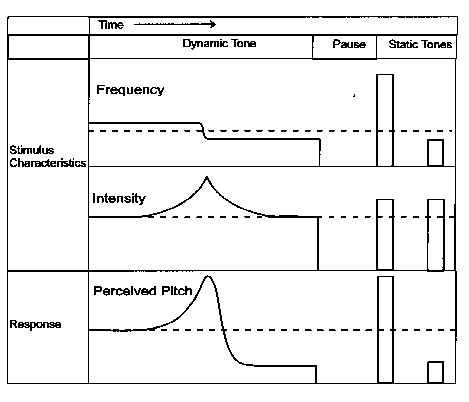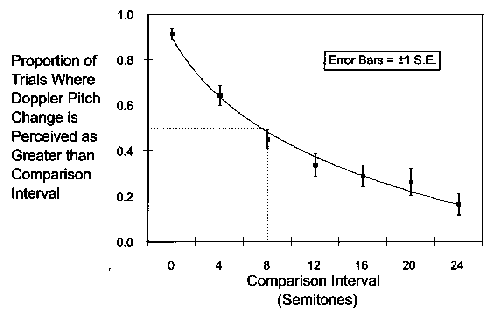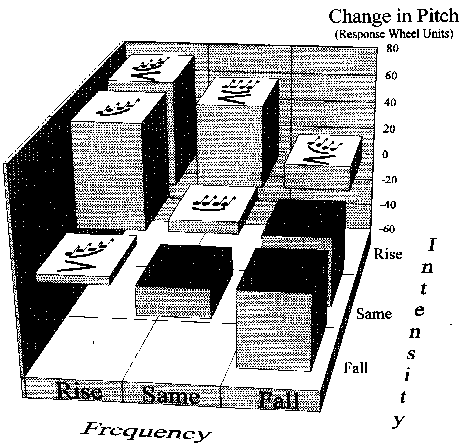Dramatic Auditory
Pitch Change Due to Dynamic Intensity Change
Michael K. McBeath, John Neuhoff
ABSTRACT
Auditory pitch is one of the principal sources of information used in
tasks ranging from localizing and parsing acoustic agents to deciphering
complex passages in music and speech. Historically, pitch is considered
to be principally a function of acoustic frequency with only a small effect
due to absolute intensity. In the present work, we demonstrate that this
view of pitch is dramatically violated in ways not previously described
in the scientific literature. We found that when tones are Doppler shifted
so that frequency only drops, the pitch dramatically rises and falls with
dynamic intensity. We report two experiments using stimuli in which intensity
and frequency are dynamically swept. First, we quantify magnitude of experienced
pitch change of Doppler-shifted tones by comparing them to constant intensity
tones that drop discretely in frequency. Then, we verify the independent
influence of swept intensity and frequency on experienced pitch height.
We show that dynamic intensity change can independently produce pitch variation
comparable to a frequency change approaching an octave. This effect opposes
and is an order of magnitude larger than the well known effect of discrete
intensity change. Since changes in intensity in musical contexts do not
distort the chromatic relation between tones, the experienced change in
pitch due to swept intensity appears to operate on the dimension of pitch
height. We propose the integrality of dynamic pitch and loudness reflects
a natural correlation between change in frequency and intensity that is
neurally encoded to facilitate processing of acoustic patterns.
 |
Figure 3. Plot of intensity, frequency,
and the typical experienced pitch over time in experiment 1. The dynamic
portion to the left is the Doppler stimuli with swept intensity and frequency.
The discrete portion to the right is the comparison interval with constant
intensity and a discrete frequency drop. The duration of the Doppler tone
is six seconds. The duration of each discrete tone is 0.25 seconds. The
pattern exemplifies the large discrete pitch change typically experienced
to match the Doppler shifted tone. |
 |
Figure 4. Results of Experiment
1. Graph shows percentage of times that the pitch drop of the Doppler tone
was experienced as larger than that of the discrete comparison interval.
The average match for the Doppler tone was a discrete drop of eight semitones,
four times larger than the actual drop. |
 |
Figure 5. Results of Experiment
2. Graph shows experienced rise in pitch for nine conditions in which frequency
and intensity were each independently swept up, held constant, or swept
down over a period of four seconds. The results indicate an additive effect
in which changes in frequency and intensity were each independently correlated
with changes in pitch. At this rate of change, an intensity sweep of 15
dB produced a pitch change roughly comparable to that of a frequency sweep
of a semitone. |
Go to Top of Page
Go
to McBeath
Research Page
Go to McBeath
Home Page


